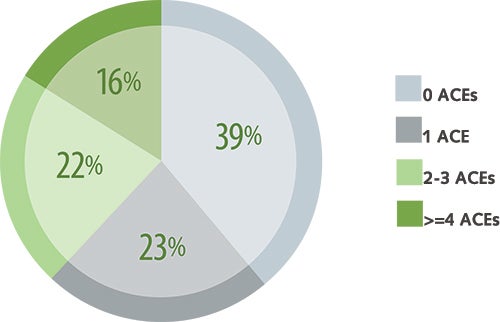Support for Trauma Patients
Adverse Childhood Experiences (ACES)
“We all like to think of childhood as this time of joy and innocence, but for many of us … it is just not true…” From Resilience: The Biology of Stress & The Science of Hope; KPJR Films, 2016
What are adverse childhood experiences (ACEs)?
ACEs are any trauma or negative experience that can affect a child during the first 18 years of life. Examples of ACEs include emotional or physical abuse, domestic violence, drug or alcohol abuse in the home, divorce, having a family member in prison and trouble getting healthy food regularly.
 How common are ACEs?
How common are ACEs?
Unfortunately, ACEs are common. In North Carolina, approximately 1 in 10 children experienced 2 or more ACEs in 2020 alone.
Who are most affected by ACEs?
Women and people of color are more likely to experience ACEs. Children who live in urban communities with high rates of violence, poverty, unemployment and unstable housing are also at increased risk of ACEs.
Why do ACEs matter?
Repeated stress and ACEs can lead to impaired brain development, trouble with memory and poor impulse control.
Children who grow up with repeated stress can have behavioral problems, engage in risky behaviors (such as unprotected sex and drinking while driving) and suffer severe injury.
Children can have poor responses to stress after trauma. The effects of childhood trauma can be passed down from parent to child.
ACEs can increase your risk of getting diabetes, heart disease, stroke, cancer, lung disease, obesity and depression.
It is never too late to seek help and treatment after trauma. We can prevent and treat ACEs — and healthy childhood is possible.